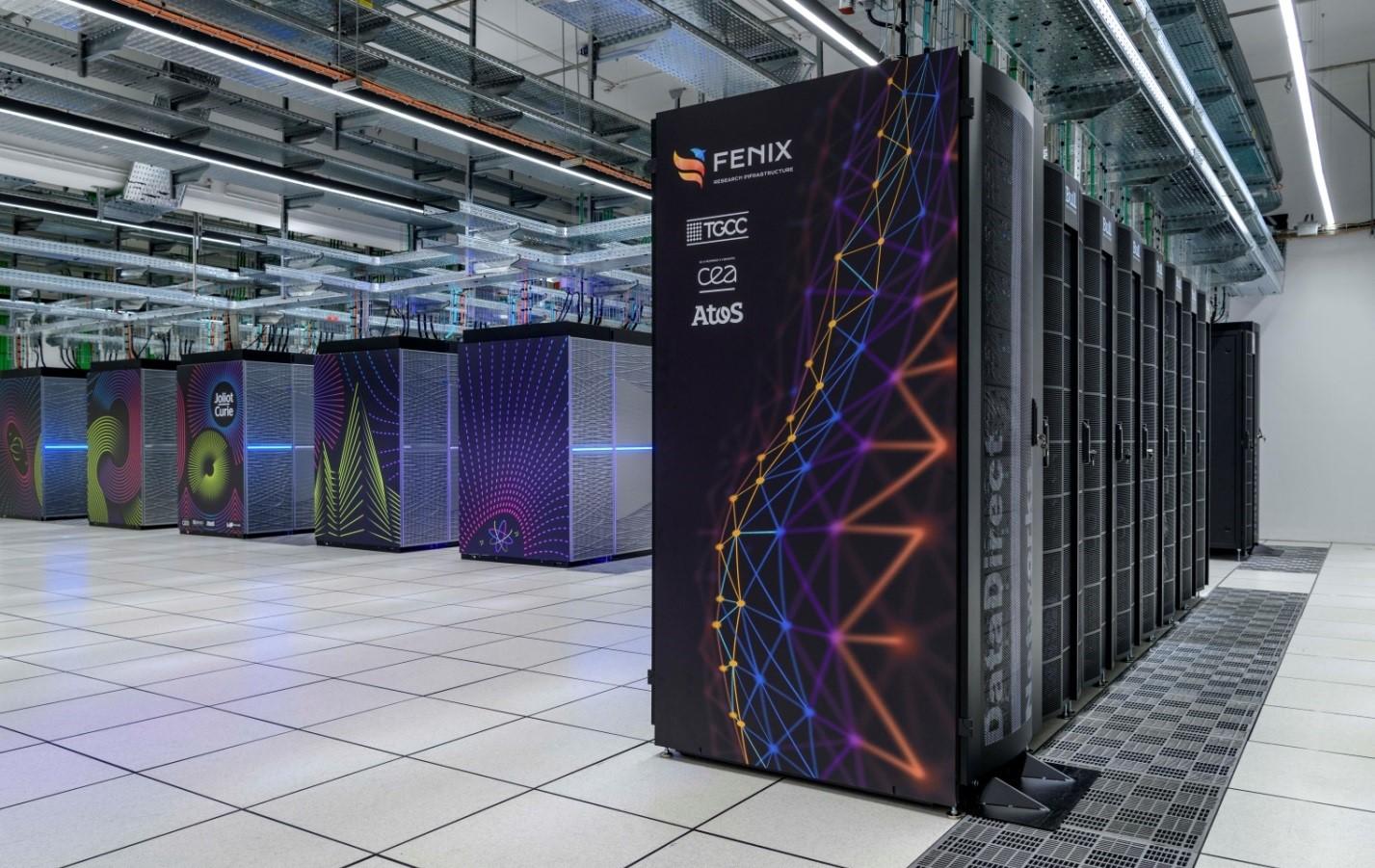
This is a Press Release launched by the French Alternative Energies and Atomic Energy Commission (CEA): https://www.cea.fr/english/Pages/News/A-new-cloud-computing-infrastructure-for-European-research-at-CEA%E2%80%99s-TGCC.aspx
September 2020 - the French Alternative Energies and Atomic Energy Commission (CEA) deployed new computing and storage resources and services in its TGCC computing centre, for the benefit of research communities in Europe. Aside from conventional HPC resources, the new systems provide services such as sovereign cloud computing, object storage, and interactive computing. These systems will be federated with other sites in Europe as part of the Fenix e-infrastructure.
In the context of the ICEI project, TGCC has been extended with new systems to address the specific needs of brain research and other scientific domains which require flexible and interactive HPC and data management services.
CEA’s TGCC is a leading European supercomputing facility. The TGCC hosts supercomputers (Joliot-Curie, Cobalt…) whose operation and user support are ensured by teams of the CEA’s Military applications division (DAM). The Joliot-Curie supercomputer and its associated multi-level storage facilities were designed by the European leader in supercomputing Atos and have been made available by GENCI (Grand Equipement National de Calcul Intensif) as the French contribution to Prace infrastructure. It is the most powerful supercomputer for research in France and recently reached a peak compute power of 22 Pflops. TGCC also hosts and operates the Cobalt supercomputer of the Computing Centre for Research and Technology, a 2.4 Petaflops system dedicated to industrial use by CEA and around twenty private partners including Safran, Thales, EDF, Michelin, L’Oréal, Valéo, and others. TGCC delivers High Performance Computing services to academia and industry, for numerical simulation, high performance data analytics and artificial intelligence applications in a huge diversity of areas.
The new systems installed as part of ICEI project thus complete the TGCC’s service offering. Designed by Atos, they include:
• An interactive computing cluster optimized for visualization, post-processing, interactive workloads, and AI. This cluster is equipped with the last generation of Intel processors, high performance Nvidia GPUs, and up to 3 Tera-bytes of memory per server. This system is particularly suited to the simulation of, and interacting with, large neural structures, as needed by the European Flagship Human Brain Project (HBP).
• A cloud infrastructure allowing researchers to develop community services like web services, shared knowledge bases, and open-data platforms. Relying on the OpenStack open-source software suite, it can run up to 600 virtual servers.
• A full flash parallel file system of nearly 1 Petabyte running Lustre. This high performance storage system is running on the latest generation of DataDirect Network controllers (DDN SSF 18KXe), and will support intensive data workloads.
• An object store of 7 Petabytes running the OpenIO open-source storage software. This system allows users to safely archive their data, and to share them on the Internet with other members of their research community.
These new systems will be interacting with other similar systems in Europe (in Germany, Italy, Switzerland, Spain) to form a federation of services called Fenix. This federation is managing the allocation of user resources across computing centres. A unified and federated mechanism of authentication will also be implemented to allow users accessing the systems, wherever they are installed. The federation will also provide services for data management, including data moving between sites or between storage systems (e.g. from high performance storage to archive storage).
"Thanks to Fenix I was able to benefit from very powerful computational resources to achieve high-performance simulations and also to interact with world class researchers to improve the relevance of my mathematical modeling approach", enthuses Alexandre Muzy, Deputy-Director of the NeuroMod Institute in Université Côte d'Azur, one of the first researchers to use these new services.
About Fenix and ICEI
The Interactive Computing E-Infrastructure for the Human Brain Project (ICEI) project is executed by leading European supercomputing centres, namely BSC (Spain), CEA (France), CINECA (Italy), CSCS (Switzerland) and JSC (Germany), to realise the Fenix infrastructure. For this purpose these centres are deploying various infrastructure services in a federated manner. The distinguishing characteristic of this e-infrastructure is that data repositories and scalable supercomputing systems are in close proximity and well integrated, also offering interactive computing services.
Fenix has received funding from the European Union's Horizon 2020 research and innovation programme through the ICEI project under the grant agreement No. 800858.
For more information: https://fenix-ri.eu
About CEA
CEA is a key player in research, development, and innovation in four main areas: defense and security, low carbon energies (nuclear and renewable energies), technological research for industry, fundamental research in the physical sciences and life sciences. CEA is fully committed to the national and European strategy for high performance computing (HPC) and big data. The CEA’s Very Large Computing Center (TGCC) is a major asset for scientific and industrial users of HPC. TGCC hosts and operates in particular GENCI’s Joliot-Curie supercomputer, whose operation and user support are ensured by teams of the CEA’s Military applications division (DAM). At TGCC, French and European researchers benefit from a cutting-edge technical environment, and from expertise at the highest level, to support their HPC efforts in all fields of science. CEA/DAM also owns and operates TERA supercomputing centre.
To find out more: http://www-hpc.cea.fr